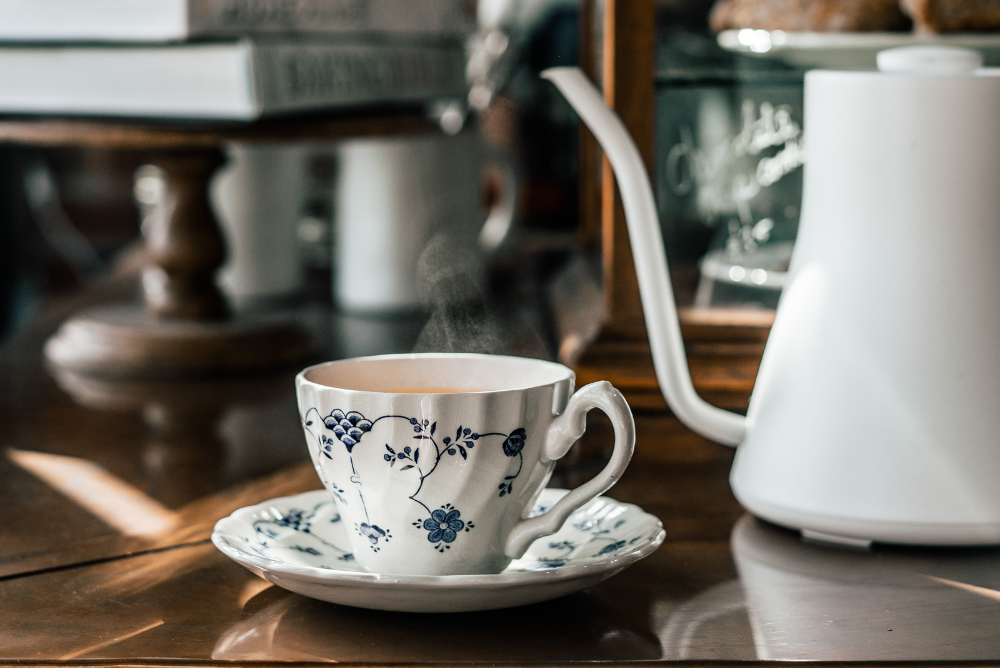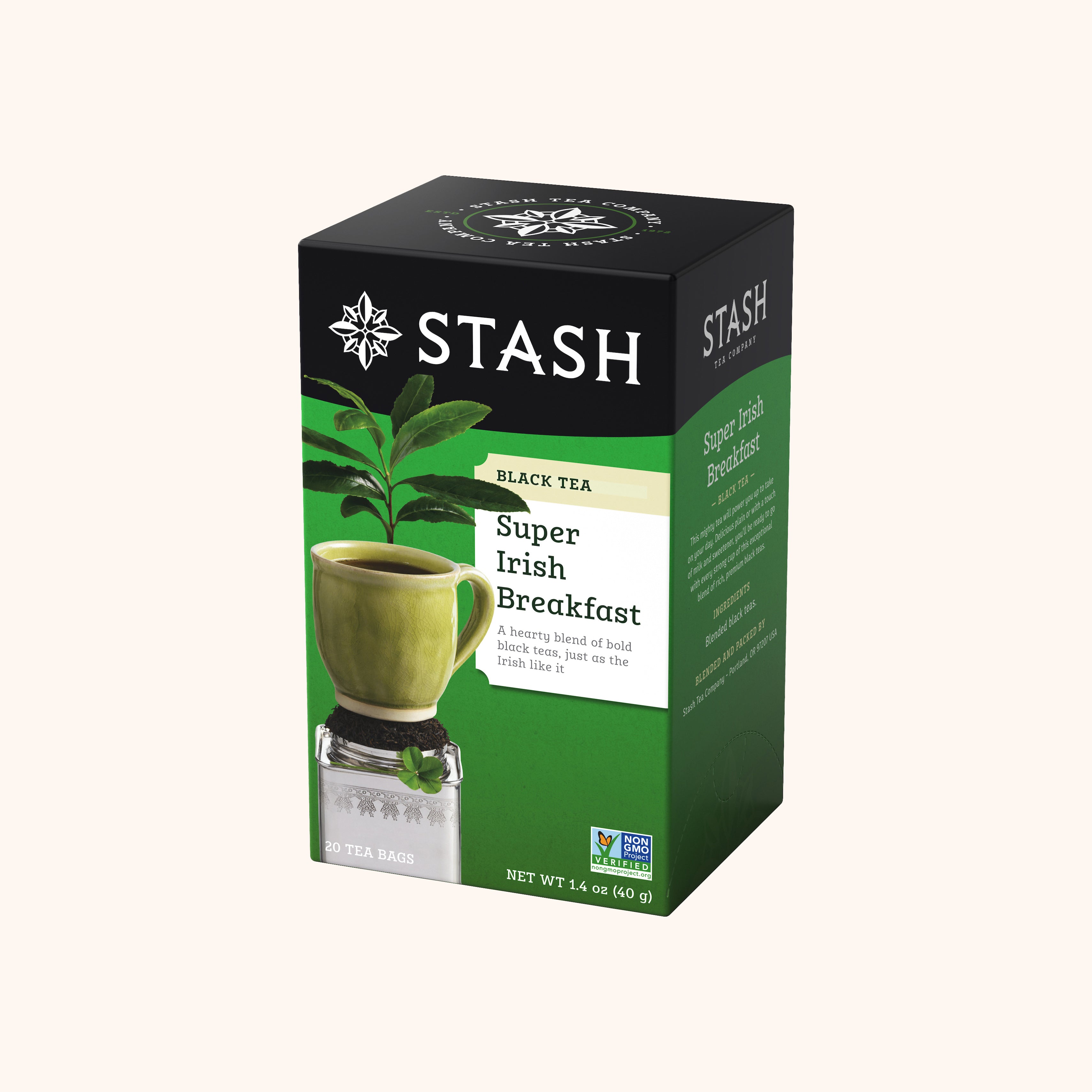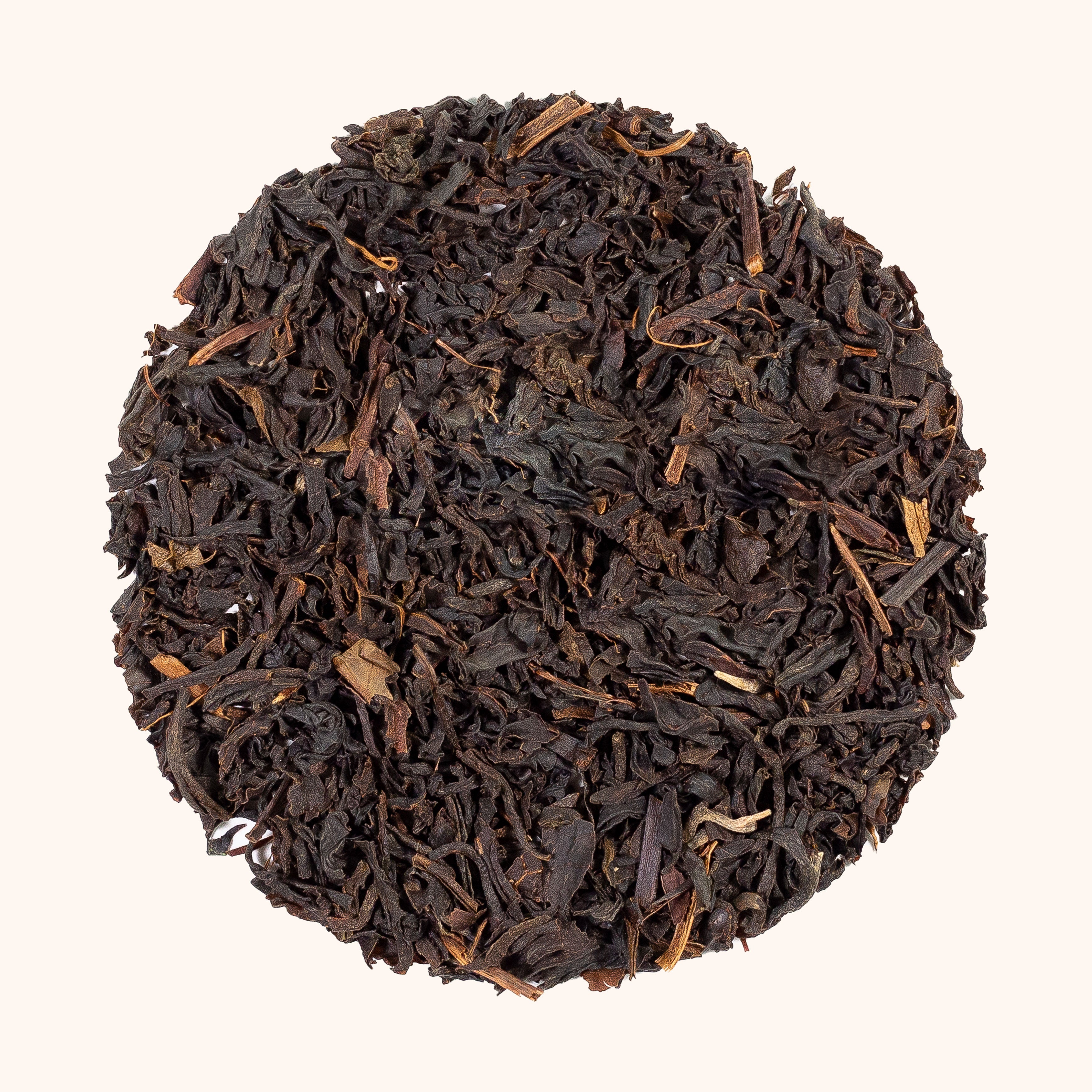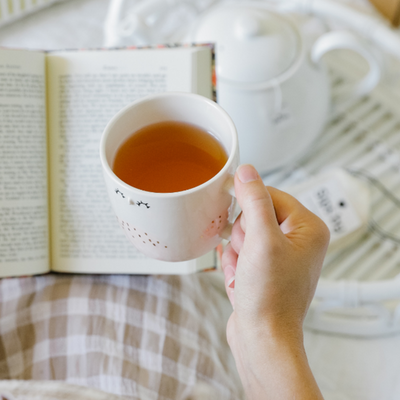
If you like breakfast tea, you’ve probably come across the two main varieties of traditional breakfast tea: English Breakfast and Irish Breakfast. Both teas pair beautifully with a delicious stack of pancakes in the morning, but what exactly is the difference?
Irish tea is known for being incredibly strong and flavorful. Tea is also deeply ingrained in Irish culture, so there are quite a few traditions surrounding their tea. Read on to learn more about Irish tea and its rich (and delicious) history.
Sips by is the #1 rated tea club. Made by tea lovers for tea lovers, our personalized tea discovery box matches you with 4 new premium teas chosen from thousands of top-rated teas based on your unique taste preferences. Learn more about our tea of the month club.
What Is Irish Tea?
Like the country it’s named after, Irish Breakfast tea is powerful and strong — but it actually doesn’t come from Ireland. Rather, Irish tea is a blend of two or three black teas, usually originating from Indian tea regions.
Irish tea typically uses Assam black tea as a base, since this tea is known for its hearty texture and strong flavor. Other black tea varieties that you might find in Irish tea include Darjeeling and Ceylon. Although the Irish drink many kinds of tea, this hearty black “breakfast” tea is usually the tea of choice at any time of the day.
Although some Irish tea drinkers take their tea without any additives, many Irish folk use milk and sugar to flavor their tea. When drinking Irish tea, it’s also common to add a spritz of lemon juice to the tea.
-
 Sold out
Sold out -
 Sold out
Sold out -
 Sold out
Sold out
History of Irish Tea
Irish tea has quite a rich and colorful history, so let’s dive in!
The English Origins of Irish Tea
Irish tea came over from England in the early 1800s, when the two countries were jointly considered Britain. At the time, the English had to import their tea indirectly through China, which was a very expensive and lengthy process.
Because of this, tea was mainly reserved for the upper class. Lower-class citizens typically couldn’t afford the steep prices that merchants demanded for their tea, and even the wealthy had to save their tea for social gatherings.
The English eventually began purchasing their tea from India, which introduced the Irish to Assam black tea. This tea became a staple in the Irish breakfast tea blends, although it was still just as expensive as the Chinese tea due to tariffs and tea company monopolies.
Because the English controlled the tea supply, often the only tea that made it to Ireland was the harsher, lower-quality tea. The Irish soon began to adapt to the overbearing tea by incorporating milk and sugar to soften the taste. In fact, the Irish still do this today!
After the Irish Starvation in the mid-19th century, many women from the lower classes actually looked down upon tea drinking. They saw tea drinking as a frivolous waste of time and money, which could be put to better use in homemaking.
Also around this time, pamphlets were put into circulation that wrongly criticized tea for its “addictive” qualities. Who knew there could be so much controversy around tea?
Another reason for the controversy was the male-dominated society at the time. The men became convinced that, if left to tea-drinking and gossiping, the Irish women would eventually decide to stage a revolt. Thankfully, Ireland moved on with its tea-drinking culture intact.
The Liberation of Irish Tea
In 1935, Samuel Bewley decided to change the game by importing tea directly from the source. This was a risky move, as there were a lot of moving parts. However, Bewley was successful.
Getting tea directly from India meant a few things to the Irish. First, they were able to get tea of a much finer quality. Soon, the Irish became accustomed to only the finest tea.
Second, tea became much cheaper. So much so, that even the lower classes were able to enjoy fine teas. Soon enough, tea became deeply ingrained in Irish social customs, with tea being offered everywhere and to everyone.
During World War II, England reduced a substantial amount of Ireland’s tea imports. Since the Irish were still receiving most of their tea from England at the time, this dealt a huge blow to their tea-drinking culture.
It was around this time that Ireland made the choice to cut England out entirely. The Irish negotiated trade directly with tea growers and has done so ever since.
Irish Tea Traditions
The Irish had to fight for their rich tea culture, so it makes sense that they have quite a few traditions surrounding their tea. Here are some of our favorite things about Irish tea culture.
All Day, Every Day
If you thought you liked tea, think again. The average Irish person drinks between six and seven cups a day, making Ireland one of the leading nations in the world for tea consumption. They use almost seven pounds of dry tea leaves every year!
Many Irish people start their day with a cup, drink throughout the day, and end their day with another cup. Although the Irish do enjoy other flavors of tea, Irish Breakfast tea still tends to be a classic.
Maybe it’s the subtle flavors of African or Darjeeling black tea, or maybe it's the roasted taste of the favorite Assam black tea. Either way, black tea will probably always have a place in Irish culture.
If you want to taste Assam by itself, we recommend Olltco Organic Assam Black Tea. This single-origin black tea is a great way to connect with Irish culture and taste the undercurrent of Ireland’s history.
Stronger is Better
Because the Irish started out drinking incredibly harsh tea that was passed over by the British, they developed a tradition of using milk and sugar in their tea. Even when they began to experience fine teas, the Irish people wanted to keep this tradition.
Because they use these additives, the Irish people brew their tea very strongly. They often use extra tea bags and steep their tea for longer in order to get a richer taste. This way, they can taste the tea even through the milk and sugar.
To make a true Irish tea, you’ll need an incredibly strong black tea. The tea should be very flavorful, but also highly caffeinated. You can enjoy your tea with cream and sugar, but there’s no pressure! It isn’t a faux-pax to take your tea straight in Ireland.
Share With Others
Tea is a necessary element of every social interaction in Ireland. In fact, as soon as a guest arrives, it is often considered impolite to not immediately offer your guest some tea.
Beyond offering tea to your guests, the Irish rarely make themselves a single cup of tea. Instead, it is an Irish custom to make a big pot of tea upon rising and whenever you would like tea so that others may join you in your tea time.
Whenever you make tea, Irish custom states you should then offer tea to those around you. The act of making and offering tea is a deeply social practice rooted in old Irish hospitality.
To make a true pot of Irish tea, try something traditional like Stash Tea Super Irish Breakfast. This Irish tea features a high ratio of Assam black tea for a fuller Irish taste, and it even comes super-strong so that you don’t have to use up more tea bags!
Politely Decline – At First
This may seem contradictory, but you should always decline your host’s first offer of tea. It’s Irish tradition to continue offering tea until your guest makes it clear they would not like a cup. You can even decline the second offer of tea if you really want to show that you don’t want to be an imposition, but make sure to accept the third if you truly want a cup of tea.
Likewise, as a host, Irish tea culture says you should offer tea at least three times immediately upon a guest’s arrival. If you’re confused, that’s okay. We don’t make the rules, but we do think it’s a lovely custom that highlights Irish hospitality and friendliness.
Sum it All Up
Ireland’s tea history depicts so much more than tea. Beyond just the history of tea, it is the history of a nation overcoming odds and a testament to the practice of Irish hospitality.
The Irish fought hard for quality tea, and it’s clear that even now the nation treasures the history behind the drink. From the traditions of taking tea with cream and sugar to the deeply social nature of Irish tea, every Irish tea custom and tradition is rooted in their history.
If you’d like to discover tea from Ireland and everywhere else around the world, take our quiz to try a monthly personalized selection of teas based on your tastes. As always, check out our blog and social media for more fun tea facts, and happy steeping!
Interested in trying these teas and others? Subscribers receive 4 teas chosen just for them in every box. Learn more about our tea subscription box or explore the loose leaf tea shop.
About Sips by: We’re a female-founded and led startup that makes discovering tea fun, personalized, and affordable. The Sips by Box is the only multi-brand, personalized tea subscription box. Each month, we match tea drinkers across the U.S. with delicious teas from over 150 global tea brands that we’re sure they’ll love. Based out of Austin, Texas, we are adept at savoring a hot mug even when it’s seasonally inappropriate.
Sources:
Irish Breakfast Tea: Ireland's Other National Drink | The Irish Place
Time for a Cuppa? Sure, Why Not . . . | Irish Times
Irish Tea Culture- Warming Hands And Hearts | Enjoy Irish Culture





